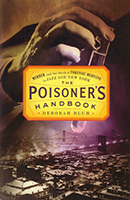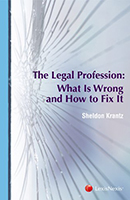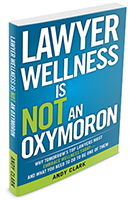 Verdict: It’s a Keeper
Verdict: It’s a Keeper
The Poisoner’s Handbook: Murder and the Birth of Forensic Medicine in Jazz Age New York
By Deborah Blum (Penguin, 2014). 336 pgs. $25.95, $16 (paperback). Order, www.amazon.com.
Reviewed by Melita M. Mullen
In 1918, Dr. Charles Norris became chief medical examiner for New York City. His tenure marked an end to the days when city coroners were corrupt political hacks, untrained in medicine or science, and spanned the boom and bust of the 1920s and 1930s along with the aberrations of Prohibition. By the time Norris died in 1935, he and chemist Alexander Gettler had succeeded in making forensic science a crucial and far more reliable function in American law enforcement.
In the fascinating stories that emerge, urban life was considerably grimmer than a Gatsby-esque party. It was a world where leaking gas, rat poison in the pastry flour, radioactive health tonics, or a few sips of bathtub gin could kill you – accidentally or on purpose. In the toughest times, your so-called brothers down at the backroom bar could even get desperate enough to slip you a mickey to collect on your insurance policy.
Want to Review a Book?
Please request a book and writing guidelines from Wisconsin Lawyer managing editor Karlé Lester, at klester@wisbar.org or (608) 250-6127. Reviewers may keep the book reviewed. Reviews of about 500 words are due within 45 days of receiving the book. Reviews are published, space permitting, in the order received and may be edited for length and clarity.
Do you have a taste for CSI or Agatha Christie novels? Routinely work with experts or crime labs? Have fond memories of experimenting with your very own chemistry set? If so, there’s something in this medical-legal-historical concoction for you. If not, there’s a good chance you’ll drink it up anyway, because it presents such a lively picture of its time, place, and lethal subject matter.
Award-winning science writer Deborah Blum, currently a journalism professor at U.W.-Madison and slated to become director of MIT’s Knight Science Journalism program in July 2015, has organized her book by type of poison and puts chloroform, wood alcohol, cyanide, arsenic, mercury, carbon monoxide, methyl alcohol, radium, ethyl alcohol, and thallium under her microscope. She has a knack for both explaining science clearly and capturing character with crisp, concise detail. The result is a spin through some of the most notorious murder cases of the early 20th century and an engaging portrait of Norris and Gettler, the odd couple who led the way in legitimizing forensic medicine.
Details about the trials are scant, but the make-or-break role of expert evidence stands out. Mystery aficionados smell murder by cyanide from a mile away – by now, we all recognize the scent of bitter almonds as the dead giveaway. But all the clever defense expert has to do is cast doubt on such certainties. For example, what if the human body produces cyanide naturally when it decomposes? How can a jury be sure that chemical signs discovered after death are actually related to the cause of death?
Time and again, an unacceptable result in the courtroom sent scientists back to the lab, to puree more brains and organs into sludge, to painstakingly distill liquids, and to perform test after test to rule out all the what-ifs. In the process, they created a body of knowledge about how the human body responds to toxic substances and showed us how to detect their presence after untimely death. Some new-found knowledge led to public health success, such as a ban on the radium-laced beverages that were slowly killing their health-conscious customers. The work of these researchers endures to this day.
Melita M. Mullen, U.W. 2012, is an attorney at Corneille Law Group LLC, Madison, engaged in medical malpractice and other defense litigation.
 Verdict: It’s a Keeper
Verdict: It’s a Keeper
The Legal Profession: What is Wrong and How to Fix It
By Sheldon Krantz (LexisNexis 2013). 132 pgs. $27.54. Order, www.amazon.com.
Reviewed by Devon Devine
As the title aptly describes, this book invites discussion of what is wrong with the legal profession and how to fix it. Like a good lawyer, Krantz takes a position: that access to justice must be improved. Most readers will agree that this goal, like motherhood and apple pie, is a good thing. The trickier proposition is how to make the improvements. Even without any special background in access to justice or ethics, readers will likely find themselves diverging from Krantz on philosophies and tactics in varying degrees.
Krantz’s description of the status quo of legal practice holds no punches. He criticizes American Lawyer magazine, perhaps a bellwether for large law firm attitudes, for its insistent focus on firm profitability ratios. In Krantz’s view, the pervasive access to justice problem has been tolerated too long by lawyers focused on representing business interests and cannot be solved without new, coordinated strategies. Bar associations and law schools are Krantz’s biggest targets, for failing to lead development and implementation of those strategies.
Krantz’s lively survey of the state of the legal field incorporates stories from general-interest periodicals such as the New York Times. Although the book is well reasoned at its core, some of the quotes and statistics can be problematic because they raise side issues that warrant further exploration.
Krantz’s best specific recommendation is based on a case study of DLA Piper, which aligned professional development training with pro-bono assignments in lawyers’ practice areas. The author’s inclusion of additional and more detailed case studies supplemented with improved charts and tables would have clarified the roles and responsibilities of the various stakeholders in the reform effort.
After reading this book, lawyers will have a foundation for better articulating their own ideas for improving the legal profession. It should be required reading for undergraduates considering a law degree and for lawyers in transition. WL
Devon K. Devine, Chicago 2004, is a member of the State Bar Nonresident Lawyers Division. He resides in Ventura, Calif.
 Verdict: Not for Me, Maybe for You
Verdict: Not for Me, Maybe for You
Lawyer Wellness is NOT an Oxymoron – Why Tomorrow’s Top Lawyers Must Embrace Wellness Today – And What You Need To Do To Be One of Them
By Andy Clark (Wellness Lawyer Inc., 2013). 180 pgs. $22.46. Order, www.amazon.com.
Reviewed by Richard L. Binder
Why do so many people who want to be lawyers end up miserable when they get there? Are lawyer types hard wired to be depressed and pessimistic? Is misery inevitable? According to author Andy Clark, the answer to all these questions is “no,” and a wellness lifestyle is the winning formula. Too many lawyers are plagued by the three “uns”: unhappy, unhealthy, and unfulfilled. But while Clark’s book hits some high notes, it’s too generic to take you out of the fog. Trying to do too much, it does too little. It’s like looking at a map of the world, when all you want to do is get to the courthouse.
Practicing law is not an easy way to make a living. Work sucks up the majority of your time, and the rest of your life falls way behind. Although the book’s general observations are accurate, they’re also too general. Stress can be a killer, but meditation can help. Exercise is good, but drink a lot of water. Good nutrition is important. We need another book to tell us this?
I think a book directed at lawyers’wellness should be more focused on handling and balancing the unique agonies and ecstasies of being a lawyer. Agonies, for example, like asking one question too many, approaching deadlines, missed arguments, and jury losses. Ecstasies are sweet and plentiful, such as a masterful brief, persuasive argument, and the heartfelt thank-you of a client. Good lawyers have great highs and great lows. Generic self-improvement advice that doesn’t deal with traversing the peculiar peaks and valleys of being a lawyer does not take you very far.
What Makes Lawyers Happy?
Rather than addressing whether lawyers are happy, a national study including Wisconsin lawyers investigated who in the profession is happy, or not, and why they feel that way. Read “What Makes Lawyers Happy?” in the July/August 2014 Wisconsin Lawyer.
All is not lost. Clark notes that a key characteristic necessary to practice law is integrity, and integrity is revealed by comparing one’s actions and choices to one’s stated visions and goals. A good yardstick. He invites us to study our habits, not as specific idiosyncrasies, but as an indicator of where we are going. Do you live (or practice) by default or design? This makes a good chapter, but it’s not enough for a book.
In general, there is too much digging to get to the good-lawyer parts. As I worked my way through, I realized there is a fourth “un,” which pertains specifically to authors: unread.
Richard L. Binder, U.W. 1973, practices with Rohde Dales LLP, Sheboygan.
